 Your new post is loading...
 Your new post is loading...

|
Scooped by
Pál Kerékfy
|
There is increasing recognition that GDP measures or GDP per capita are insufficent when it comes to understanding the true economic well-being of households. That has resulted in research becoming increasingly focused on household income with a higher emphasis on income inequality. A recent OECD paper analyzed the distribution of household wealth across 28 countries. The situation is by far the worst in the United States where the richest 10 percent of households own 79 percent of the wealth. The bottom 60 percent of American households only own 2.4 percent of household wealth. The situation is the same in Europe where the inequality gap is particularly wide in some countries. In the Netherlands, 68 percent of wealth is owned by the top 10 percent of households while in Denmark, the figure is 64 percent. The OECD found that in both countries, the share of wealth held by the bottom 60 percent of households is negative, meaning that on average, they have liabilities exceeding the value of their assets.

|
Scooped by
Pál Kerékfy
|
There's a lot of hype about artificial intelligence, and it's important to understand this is not general intelligence like that of a human. This system can read faces and grade papers but it has no idea why these children are in this room or what the goal of education is. A typical AI system can do one thing well, but can't adapt what it knows to any other task. So for now, it may be that calling this "intelligence," isn't very smart.

|
Scooped by
Pál Kerékfy
|
Manapság a munkavállalók, és a KKV-s cégvezetők sem ódzkodnak a mesterséges intelligenciás megoldásoktól, sőt a Future Workplace felmérése szerint 93 százalékuk el is fogadna „robotoktól” kapott utasításokat és együtt is tudna velük működni a dolgos hétköznapokban. A leggyorsabban a döntéshozatali folyamatokban és az ügyfélélmény minőségének változásában mutat eredményt az MI alkalmazása, de pozitív hatást fejt ki a teljesítménymenedzsmentre, a munkaerő toborzásra és a bérszámfejtésre is.

|
Scooped by
Pál Kerékfy
|
There is increasing recognition that GDP measures or GDP per capita are insufficent when it comes to understanding the true economic well-being of households. That has resulted in research becoming increasingly focused on household income with a higher emphasis on income inequality. A recent OECD paper analyzed the distribution of household wealth across 28 countries. The situation is by far the worst in the United States where the richest 10 percent of households own 79 percent of the wealth. The bottom 60 percent of American households only own 2.4 percent of household wealth. The situation is the same in Europe where the inequality gap is particularly wide in some countries. In the Netherlands, 68 percent of wealth is owned by the top 10 percent of households while in Denmark, the figure is 64 percent. The OECD found that in both countries, the share of wealth held by the bottom 60 percent of households is negative, meaning that on average, they have liabilities exceeding the value of their assets.

|
Scooped by
Pál Kerékfy
|
It doesn’t take much forward thinking to realize that today’s jobs are becoming automated. Robots? Check. Artificial intelligence combined with Internet of Things devices? Check. They are coming and in ways we never thought possible 10 years ago. Who would have thought we’d be talking to chat boxes for customer service, for example? In general, automation is riding a wave as employers perceive better productivity and lower costs as benefits. Does this move toward a digital workforce mean fewer jobs? Leading economists argue the opposite, that automation will actually increase jobs. What is different than in the days of weavers and ATMs is that the jobs required now and in the future require higher-level skills. If an argument is to be made against digital transformation, it is that the divide between high-level skills and low-level skills will become wider, with little or no middle ground.

|
Scooped by
Pál Kerékfy
|
Régóta a figyelem fókuszában A mesterséges intelligenciával már több mint ötven éve foglalkozik a tudomány, és ezalatt hol felkapott, hol érdektelen dolog volt. Bizonyos, nagyon korlátozott gyakorlati megvalósításai is több évtizede léteznek már, de az utóbbi években hirtelen megsokszorozódott a számuk. A robot is régi téma már, és a gyárban összeszerelő munkát végző robotban semmi …

|
Scooped by
Pál Kerékfy
|
Fourier famously predicted work could become play – its qualities could absorb the qualities of aimlessness, humour, even eroticism. We would flit from one kind of work to another, oblivious of its productive function. Marxism was founded on the rejection of this idea: anti-utopian socialism became focused on reducing work to a minimum while maximising free time. The biggest enigma of the post-work society is what happens to the self when it cannot define itself against corporate identity, skill set or seniority. We’ll see.

|
Scooped by
Pál Kerékfy
|
On a global scale, we calculate that the adaptation of currently demonstrated automation technologies could affect 49 percent of working hours in the global economy. This potential corresponds to the equivalent of 1.1 billion workers and $11.9 trillion in wages. Among countries, the potential ranges between 40 and 55 percent, with just four countries—China, India, Japan, and the United States—accounting for just over half the total wages and workers. The potential could also be large in Europe: according to our analysis, the equivalent of 54 million full-time workers and more than $1.9 trillion in wages are associated with technically automatable activities in the continent’s five largest economies alone—France, Germany, Italy, Spain, and the United Kingdom.

|
Scooped by
Pál Kerékfy
|
“... measures like GDP and productivity as eternal truths of economics and, indeed, they have proved their worth over time. Nonetheless, some of them are not only reasonably recent inventions, dating from around the second world war, but are designed to measure activity in an economy of mass manufacturing, a sector increasingly being displaced by the information economy as the primary source of global wealth. This means the measures themselves are also increasingly irrelevant. This is a huge wake-up call for governments and businesses around the world who are proving slow to engage with the changing nature of work and who have tended to hide behind the mantra of “jobs and growth”, as if that will take care of everything. It is a reminder to all of us that we are long way from understanding what the future of work really looks like. “Productivity is for robots. Humans excel at wasting time, experimenting, playing, creating and exploring. None of these fare well under the scrutiny of productivity. That is why science and art are so hard to fund. But they are also the foundation of long-term growth.”

|
Scooped by
Pál Kerékfy
|
Leveraging blockchain for your IoT data offers new ways to automate business processes among your partners without setting up a complex and expensive centralized IT infrastructure. Blockchain’s data protection fosters stronger working relationship with your partners and greater efficiency as partners take advantage of the information provided.
IBM Watson IoT Platform enables IoT devices to send data to private blockchain ledgers for inclusion in shared transactions with distributed records, maintained by consensus, and cryptographically hashed.

|
Scooped by
Pál Kerékfy
|
The primacy of people in the digital age
Winners in the digital age know success comes from more than just completing a checklist of technology. It hinges on people. Keeping up with changing technology is vital. But today, it’s just as important to evolve the organization’s corporate culture.
The Accenture Technology Vision 2016 investigates five trends behind a ‘people-first’ approach: Intelligent automation, liquid workforces, the platform economy, predictable disruption and digital trust.
|

|
Scooped by
Pál Kerékfy
|
In the recent five years, we are seeing that Chinese AI is getting to be almost as good as Silicon Valley AI. And I think Silicon Valley is not quite aware of it yet. China's advantage is in the amount of data it collects. The more data, the better the AI.

|
Scooped by
Pál Kerékfy
|
Kai-Fu Lee, a venture capitalist who used to develop AI for Google and Microsoft, predicts that AI will automate 40 percent of the world's jobs in 15 years.

|
Scooped by
Pál Kerékfy
|
Everyone loves a good invasion story. Robots, aliens, body snatchers — that’s what fills movie theaters and sells newspapers (or, in this day and age, attracts clicks). In reality, I expect the relationship between people, robots, AI and future unknowable technologies to continue the same pattern we’ve seen in 200 years of technological change: Some jobs are made redundant, some jobs are enhanced and many new jobs are created.

|
Scooped by
Pál Kerékfy
|
Once the machines are doing everything, we will be making whatever it is that other people value. We’ll also be consuming, as well as the output of the machines, whatever it is that we value from the production of others. Yes, this quite possibly could mean a society in which absolutely everything is done by the machines except for the amassing of collectibles on blockchain. A CryptoKitty licking a human face, forever. Note, though, that this will only be true if we’ve run out of other things we want, and everything except this frivolity is catered to. That is, we’ve all got everything we want – and what would be so terrible about a world like that?

|
Scooped by
Pál Kerékfy
|
A mesterséges intelligencia már mindennapjaink része. Korábbi cikkünkben Kerékfy Pál világított rá az összefüggésekre, sokan olvasták a jelenünk-jövőnk érdekes leírását. Most ezt folytatjuk, hisz a világ rohamosan változik, de vajon miben más ez a mostani ipari forradalom a korábbiakhoz képest? Hogyan képes a mai 40 éves „X” generáció mindezzel lépést tartani? A mindennapi életünket érintő fejlesztések, újdonságok közül melyiket kövessük kiemelt figyelemmel, ha szeretnénk diákjainknak releváns választ adni arra, mit is érdemes tanulniuk a versenyképesség eléréséhez? Slamovits Tibor üzleti intelligenciával és big data megoldásokkal foglalkozó szakember cikke.

|
Scooped by
Pál Kerékfy
|
At the time, they were spending twelve hours a day on milking alone (six hours at noon and six hours at midnight), but with Amanda and her siblings coming into the age at which they could start thinking about taking over the farm’s ownership and management, they needed a way to free up their time so they could focus on the aspects of the business that best fit their skills and personalities. “The system is very expensive, but the reason that we did it was looking ahead, and looking at the fact that my generation, we don't want to spend 12 hours a day stuck in a milking parlor. We want to be a lot more involved in the individualized cow care, and my brother would much rather be out in the fields doing cropping,” Amanda says. “And so, we decided that this is a really important aspect to our succession plan.”

|
Scooped by
Pál Kerékfy
|
AZ IPAR 4.0 ÉS A PROJEKTMENEDZSMENT írta: Prónay Gábor dátum: 2017. július 4. 11:23:16 Címkék: globalizáció 2.0, industry 4.0, mesterséges intelligencia, IoT (Internet of Things), big data, 3D printing, automatizálás, robotizálás, adatelemzés, 3D tervezés, egydarabos széria, szolgáltatás dominancia, szervezeti hierarchia csökkenésA globalizálódó világ és a rendkívüli technológiai fejlődés jelentős befolyást gyakorol az egyes ember életére és ennek megfelelően a projektmenedzsment kultúrára. A bekövetkező változások meghatározó összetevőinek megismerése alapvető érdeke minden hatékony eredményességre törekvő szakembernek, menedzsernek, vezetőnek. Az intenzívebbé váló versenyben a sikerességhez új ismeretekre, képességekre és bizalomra épített, önszabályzó hozzáállásra van szükség. A hazai tapasztalatok, problémák megértését és a jó megoldások megtalálását kívánja elősegíteni a Műhely beszélgetés. Köszönet Kerékfy Pál véleményformáló, informatikai szakértőnek, hogy tapasztalataira építve vállalta a téma végiggondolását, feldolgozását és mediátorként a Műhely munka támogatását. A 2017. szeptember 21-i 34. PM Műhely (időpont : 16:00-18.00, helyszín : Bp. XI. Magyar Tudósok krt 2. BME I.ép. B.110 terem) az Ipar4.0-ként megfogalmazott társadalmi- és technológiai változások elemeit tekinti át és vizsgálja ezek hatásait a projektmenedzsmentre, azzal a céllal, hogy a Műhely beszélgetés hozzájáruljon a szakemberek tájékoztatásához és ezen keresztül a projektmenedzsment kultúra fejlődéséhez. A témát a Műhely résztvevői választották ki és a bevezető blog megírására illetve bevezető előadás megtartására Kerékfy Pált kérték fel.

|
Scooped by
Pál Kerékfy
|
Suzan is the most valued employee at Australian bank ANZ’s captive unit in India. She works nearly 24 hours a day, is appreciated so much by the team members that they’ve let her take the workstation with the best view.

|
Scooped by
Pál Kerékfy
|
In 2027, human beings will remain at the center of work but smart machines will be our co-workers.

|
Scooped by
Pál Kerékfy
|
Today, change must be built into an organization’s DNA.
But how? By empowering the one part of your business that is hard-wired for evolution. Your people.

|
Scooped by
Pál Kerékfy
|
Although technology is what is driving this disruption, it is also at the center of creating the solutions to mitigate these risks. This includes massive online open courses (MOOCs) that are enterprise-focused and scalable. In addition, internal collaboration tools that foster group thinking and problem solving will also build a more effective workforce. But this education must also go beyond the four walls of the office. There is a great opportunity for corporations to align their corporate social responsibility initiatives with STEM education [efforts] in order to integrate futuristic technologies into the education of our youth in order to better prepare them for the future. This includes exposing them to robotics and AI at a younger age and giving them opportunities to experiment with emerging technology. With AI already entering the workplace, we must prepare the next generation of the workforce to work seamlessly with these technologies as a partner, rather than seeing them as a threat.
|



 Your new post is loading...
Your new post is loading...




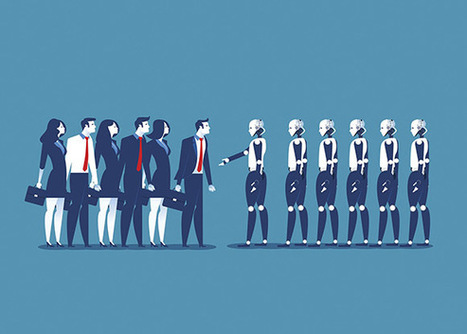



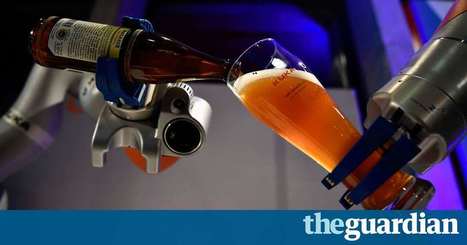
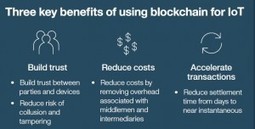

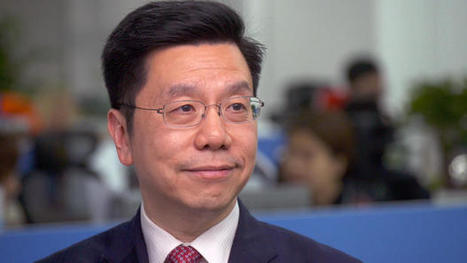

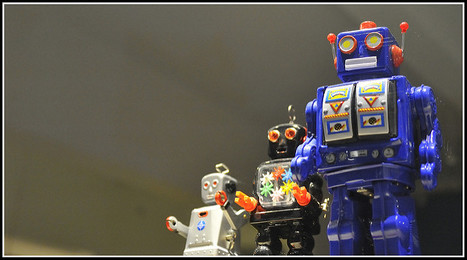


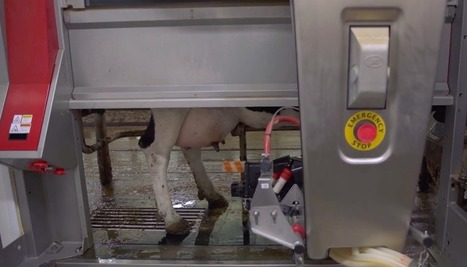
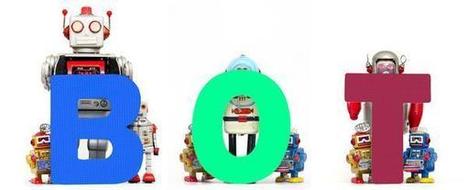
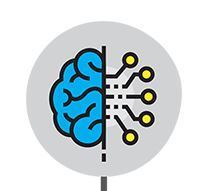
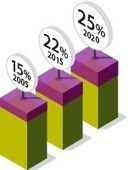
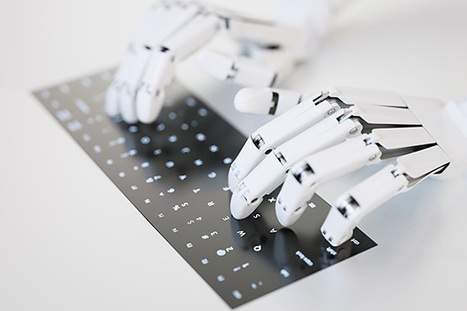





Ez egy hosszú ideje létező ördögi spirál. A vagyon és a jövedelem a fejlett országokban nagyon durván koncentrálódik, gyorsan nőnek a jövedelmi és vagyoni különbségek. A tőke szempontjából ez nem azért baj, mert “igazságtalan”. A baj az, hogy a gazdagok viszonylag sokkal kevesebbet költenek, így a pénz kivonódik a gazdaságból, nem generál keresletet. Ha alacsony a kereslet, csak olcsón lehet termelni. Egyre kevesebb embernek lesz rendes jövedelme, a kereslet tovább csökken. A költségcsökkentési nyomás növeli az automatizációt, amitől (talán csak ideiglenesen, néhány évre vagy évtizedre) csökken a munkahelyek száma. Folytatódik az út lefelé a spirálban…
A legrosszabb helyzetben Észak-Amerika és Nyugat-Európa van. Egyes országokban a skála alsó 60%-ában lévő háztartásoknak negatív az átlagos vagyona! (Több mint a fele a háztartásoknak élhet nagyon súlyos adósságcsapdában!)
A szokásos mérőszám (az egy főre eső bruttó hazai termék) rossz, ezt egyáltalán nem mutatja. Másképp kellene mérni az országok gazdasági egészségét!
Ez a grafikon egy nagyon részletes, 28 országot bemutató OECD-tanulmány egy kiragadott adatát mutatja be. A teljes tanulmány (angol, 70 oldal) itt található: https://read.oecd-ilibrary.org/economics/inequalities-in-household-wealth-across-oecd-countries_7e1bf673-en#page1
Biztos érdekel többeket Magyarország helyzete. Az egyenlőtlenség területén jól állunk, 18 ország áll nálunk rosszabbul a 28-ból. Ennek nem kell nagyon örülni, mert nálunk is fokozódik majd az egyenlőtlenség… Itt egy részletes táblázat: https://read.oecd-ilibrary.org/economics/inequalities-in-household-wealth-across-oecd-countries_7e1bf673-en#page16
Nem akarok úgy csinálni, mintha értenék a világgazdasághoz, de csak elmondom, hogy szerintem valami radikális változásra van szükség a jövedelmek elosztásában. Nem folytatódhat az a rendszer, hogy az értéket előállító emberek a lehető legkevesebb pénzt kapják a munkájukért, mert így a rendszer saját magát öli meg...
#OECD #USA #Netherlands #Denmark #Germany #UK #Canada #France #Hungary #inequality #wealth #automation #robotics #GDP